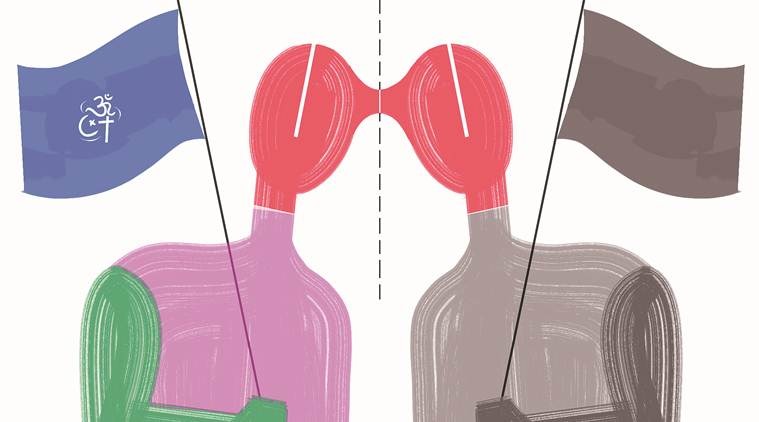There are instances highlighted in the report where for the photography assignments, Hindu students refused to visit Muslim areas and vice versa due to “the deep-seated prejudice one community had toward the other.
A study involving 180 students of three villages of Ahmedabad district’s Sanand taluka has brought to fore how public religious sites like temples and mosques and residential buildings which use religious identities reinforce communal divide in the society.
The study — Re-imagining Religiously Segregated Spaces: Building Interfaith Sites Through Participatory Photography — by Kiran V Bhatia from School of Journalism and Mass Communication, University of Wisconsin-Madison, and Manisha Pathak Shelat of Mudra institute of Communications (MICA) Ahmedabad —was published in Journal of Communication Inquiry last month.
The study discusses the findings of a photography project undertaken to help Hindu and Muslim students reimagine the religious spaces they inhabit in their villages.The study is part of a two-year-long project undertaken to counter religious discrimination among adolescents in these villages. The study highlights how there are many places in and around these villages where access is limited to people from either communities. For instance, the open grounds around a Ram temple near the Thakor Niwas are limited to the use by Hindus. If a Muslim resident enters and uses this space, others are likely to get suspicious of his or her intention.
“The residents in the villages are either Hindus or Muslims. Though there have been no instances of communal conflicts, communal prejudice toward the “religious other” is dominant…,” the research pointed out.
For the photography project, the researchers involved 49 students of classes 7 and 8 in the age-group of 9 to 12 years, enrolled at a primary Gujarati medium school in Sanand. Photo-walks were organised, four times every week for two months, where the class was divided into teams of six students based on a lottery system. This ensured that both religions had unbiased representation in the team. Each team produced two photo stories, says Manisha Pathak Shelat, Chair, Center for Development Management and Communication (CDMC) at MICA.
There are instances highlighted in the report where for the photography assignments, Hindu students refused to visit Muslim areas and vice versa due to “the deep-seated prejudice one community had toward the other”.
As the photo exhibition presented at the end of the study served as an inclusive site where student-participants from both the communities created a visual distortion by working together in interfaith teams. “Thus, in this article, we concede that participatory photography provides an avenue through which the young student-participants can find ways to communicate with the ‘religious other’ and insert public imagination with new meanings related to the physical sites they frequent,” said Shelat.
Source: Read Full Article





